| Listing 1 - 10 of 12 | << page >> |
Sort by
|
Book
ISBN: 1280252405 9786610252404 0471694444 Year: 2004 Publisher: Hoboken, N.J. : Chichester : Wiley ; John Wiley,
Abstract | Keywords | Export | Availability | Bookmark
 Loading...
Loading...Choose an application
- Reference Manager
- EndNote
- RefWorks (Direct export to RefWorks)
THE SINGLE MOST COMPREHENSIVE SOURCE OF COMMODITY AND FUTURES MARKET INFORMATION AVAILABLE Since 1939, professional traders, commercial hedgers, portfolio managers, and speculators have come to regard The CRB Commodity Yearbook as the 'bible' of the industry. Here is a wealth of authoritative data, gathered from government reports, private industry, and trade and industry associations, all compiled by the Commodity Research Bureau, the organization of record for the entire commodity industry itself.Absolutely essential for identifying changing trends in supply and demand and for
Multi
ISSN: 26638215 Year: 2004 Publisher: Rome, Italy : Information Division, Food and Agriculture Organisation of the United Nations,
Abstract | Keywords | Export | Availability | Bookmark
 Loading...
Loading...Choose an application
- Reference Manager
- EndNote
- RefWorks (Direct export to RefWorks)
The State of Agricultural Commodity Markets presents commodity market issues in an objective and accessible way to policy-makers, commodity market observers and stakeholders interested in agricultural commodity market developments and their impacts on countries at different levels of economic development.
Food industry and trade --- Commodity exchanges --- Commodity exchanges. --- Food industry and trade.
Book
Year: 2004 Publisher: [Washington, D.C.] : U.S. General Accounting Office,
Abstract | Keywords | Export | Availability | Bookmark
 Loading...
Loading...Choose an application
- Reference Manager
- EndNote
- RefWorks (Direct export to RefWorks)
Commodity exchanges --- Evaluation. --- United States --- Egypt --- Foreign economic relations
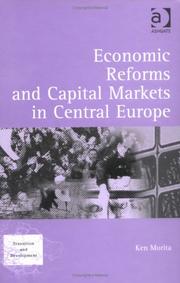
ISBN: 0754608840 Year: 2004 Publisher: Aldershot Ashgate
Abstract | Keywords | Export | Availability | Bookmark
 Loading...
Loading...Choose an application
- Reference Manager
- EndNote
- RefWorks (Direct export to RefWorks)
Commodity exchanges --- Commodity futures --- Futures market --- Europe, Central --- Economic policy.

ISBN: 9210612035 1417552379 Year: 2004 Publisher: [Place of publication not identified] United Nations Publications
Abstract | Keywords | Export | Availability | Bookmark
 Loading...
Loading...Choose an application
- Reference Manager
- EndNote
- RefWorks (Direct export to RefWorks)
AA / International- internationaal --- 050 --- 307.4 --- Officiële publicaties (per land). --- Productiestatistiek. --- Yearbooks --- Industrial statistics --- Commercial products --- Consumption (Economics) --- E-books --- United Nations --- Statistics --- Consumer demand --- Consumer spending --- Consumerism --- Spending, Consumer --- Demand (Economic theory) --- Commodities --- Economic goods --- Merchandise --- Products, Commercial --- Commodity exchanges --- Manufactures --- Substitute products --- Industries --- Contracting out --- Officiële publicaties (per land) --- Productiestatistiek
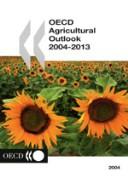
ISBN: 9264020098 926402008X Year: 2004 Publisher: Paris, Cedex, France : OECD,
Abstract | Keywords | Export | Availability | Bookmark
 Loading...
Loading...Choose an application
- Reference Manager
- EndNote
- RefWorks (Direct export to RefWorks)
This tenth edition of the OECD Agricultural Outlook analyses how global and domestic forces are shaping agricultural markets to 2013. It highlights some of the risks and uncertainties that may influence the agricultural outlook. After presenting a broad overview of the situation and setting out the assumptions used, the report presents detailed projections for production, consumption, trade, stocks, and prices for OECD countries as well as Argentina, Brazil, China, and Russia. Commodities covered include cereals, oilseeds, sugar, meat, and dairy. Two special chapters cover medium term mark
Agriculture -- Economic aspects -- Forecasting -- Periodicals. --- Agriculture -- Economic statistics -- Statistics -- Periodicals. --- Agriculture and state -- Periodicals. --- Produce trade --- Agriculture and state --- Agriculture --- Forecasting. --- Agricultural forecasting --- Forecasting --- Agricultural estimating and reporting --- Agrarian question --- Agricultural policy --- State and agriculture --- Economic policy --- Land reform --- Agricultural marketing --- Agricultural products --- Food trade --- Food industry and trade --- Commodity exchanges --- Farm produce --- Government policy --- Economic aspects
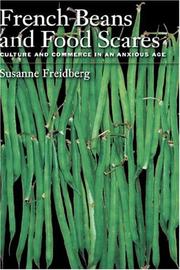
ISBN: 0195169603 0195169611 1423720598 0195346998 1280534494 1433700476 9781423720591 9781433700477 9780195169607 9780195169614 9781280534492 9780195346992 9786610534494 6610534497 0197562183 0199883505 Year: 2004 Publisher: Oxford Oxford University Press
Abstract | Keywords | Export | Availability | Bookmark
 Loading...
Loading...Choose an application
- Reference Manager
- EndNote
- RefWorks (Direct export to RefWorks)
From mad cows to McDonaldisation to genetically modified maize, European food scares and controversies at the turn of the millennium provoked anxieties about the perils hidden in an increasingly industrialised, internationalised food supply. These food fears have cast a shadow as long as Africa, where farmers struggle to meet European demand for the certifiably clean green bean. Britain and France still do business mostly with their former colonies, in ways that differ as dramatically as their national cuisines. French Beans and Food Scares explores the cultural economies of two "non-traditional" commodity trades between Africa and Europe - one anglophone, the other francophone - in order to show not only why they differ but also how both have felt the fall-out of the wealthy world's food scares.
Third World: agricultural and food problems --- France --- Produce trade --- Horticultural products industry --- Food adulteration and inspection --- Horticultural products --- Government policy --- International cooperation --- Inspection&delete& --- E-books --- Products, Horticultural --- Farm produce --- Horticulture --- Plant products --- Analysis of food --- Food --- Food, Pure --- Food inspection --- Inspection of food --- Pure food --- Adulterations --- Consumer protection --- Public health --- Sanitary chemistry --- Plant products industry --- Agricultural marketing --- Agricultural products --- Food trade --- Agriculture --- Food industry and trade --- Commodity exchanges --- International cooperation. --- Inspection --- Adulteration --- Economic aspects --- Developing countries: agricultural and food problems
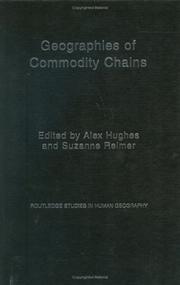
ISBN: 0415339103 0415514037 0203691970 1280077298 0203448693 1134301952 9780203448694 9780415339100 9781134301904 9781134301942 9781134301959 9780415514033 1134301944 Year: 2004 Publisher: London New York
Abstract | Keywords | Export | Availability | Bookmark
 Loading...
Loading...Choose an application
- Reference Manager
- EndNote
- RefWorks (Direct export to RefWorks)
Individuals, consumer groups, nation states and supra-national bodies increasingly have interrogated the ethics of particular production and consumption relations such as GM foods. Flowing from and bound up with these political concerns is the growing interest in the mutual dependence of sites of (for example) production, distribution, retailing, design, advertising, marketing and final consumption.This timely volume draws together contributions concerned with the production, circulation and consumption of commodities. Not only do these case study examples seek to transcend older und
338.439 --- 656.073.3 --- Commercial products --- Commercial geography --- Consumption (Economics) --- -Produce trade --- -Physical distribution of goods --- Production (Economic theory) --- Microeconomics --- Supply and demand --- Demand (Economic theory) --- Supply-side economics --- Distribution of goods, Physical --- Business logistics --- Marketing --- Marketing channels --- Agricultural marketing --- Agricultural products --- Food trade --- Agriculture --- Food industry and trade --- Commodity exchanges --- Farm produce --- Geography, Commercial --- Geography --- Economic geography --- Commodities --- Economic goods --- Merchandise --- Products, Commercial --- Manufactures --- Substitute products --- Economie van de voedselproductie. Economie van de voedingsindustrie. --- Distribution of goods in the vehicle --- Moral and ethical aspects --- Environmental aspects --- Economic aspects --- Contracting out --- Commercial geography. --- Commercial products. --- Physical distribution of goods. --- Produce trade --- Moral and ethical aspects. --- Environmental aspects. --- Production (Economic theory). --- 656.073.3 Distribution of goods in the vehicle --- 338.439 Economie van de voedselproductie. Economie van de voedingsindustrie. --- Physical distribution of goods --- Economie van de voedselproductie. Economie van de voedingsindustrie
Book
ISBN: 146235503X 145278759X 1281312398 1451895860 9786613778574 Year: 2004 Publisher: Washington, D.C. : International Monetary Fund,
Abstract | Keywords | Export | Availability | Bookmark
 Loading...
Loading...Choose an application
- Reference Manager
- EndNote
- RefWorks (Direct export to RefWorks)
This paper analyzes whether uniform tariffs give rise to the highest welfare compared with tariffs that either escalate or de-escalate along the value chain of production. We show that countries may be better off with de-escalating tariffs where tariff rates are higher on intermediate inputs and lower on final goods. The key point is that higher tariffs can encourage agglomeration of intermediate input suppliers and final goods producers in one country. With high tariffs on intermediate inputs, the benefits of close proximity to final goods producers may outweigh the benefits of locating according to comparative advantage, which is more likely when the share of intermediate inputs in producing final goods is high. De-escalating tariffs yield the highest welfare when the benefits of agglomeration are very high. These benefits of agglomeration accrue to both countries in the form of lower prices.
Tariff. --- Industrial location. --- Business enterprises --- Business location --- Corporations --- Industries --- Industries, Location of --- Location of industries --- Plant location --- Regional planning --- Space in economics --- Ad valorem tariff --- Border taxes --- Customs (Tariff) --- Customs duties --- Duties --- Fees, Import --- Import controls --- Import fees --- Tariff on raw materials --- Commercial policy --- Indirect taxation --- Revenue --- Customs administration --- Favored nation clause --- Non-tariff trade barriers --- Reciprocity (Commerce) --- Location --- Finance: General --- Macroeconomics --- Taxation --- International Economics --- Industries: Manufacturing --- Trade: General --- Models of Trade with Imperfect Competition and Scale Economies --- Economic Integration --- Trade Policy --- International Trade Organizations --- Labor Economics: General --- Industry Studies: Manufacturing: General --- General Financial Markets: General (includes Measurement and Data) --- Public finance & taxation --- Labour --- income economics --- Manufacturing industries --- International trade & commerce --- Finance --- Tariffs --- Labor --- Manufacturing --- Trade facilitation --- Commodity markets --- Taxes --- Economic sectors --- Revenue administration --- Financial markets --- Tariff --- Labor economics --- Commodity exchanges --- Bolivia --- Income economics
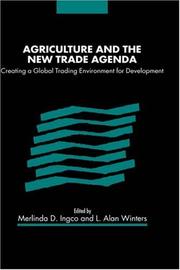
ISBN: 0521826853 0521054494 1139809970 1107147077 1107316251 1107321646 1107318076 0511550677 1107317215 1107315271 1299399363 9781107321649 9780511550676 9781107316256 9780521826853 9780521054492 9781107147072 9781139809979 9781107317215 9781107318076 9781299399365 9781107315273 Year: 2004 Publisher: Cambridge Cambridge University Press
Abstract | Keywords | Export | Availability | Bookmark
 Loading...
Loading...Choose an application
- Reference Manager
- EndNote
- RefWorks (Direct export to RefWorks)
Negotiating the liberalization of world agricultural trade in the World Trade Organization (WTO) is fraught with difficulty due to the complexity of the issues and the wide range of interests across countries. In the round of global trade negotiations under the WTO, different perspectives on trade reform have produced a highly contentious agenda. These issues are addressed from a range of perspectives in this survey of the trade agenda and its implications for both developing and developed countries. Agricultural trade specialists, including those in universities, in international organizations and think tanks, analyse a comprehensive range of topics including interests and options in the WTO trade negotiations, the trade agenda from a development patent perspective, WTO trade rules, trade barriers, tariff negotiations and patent protection for developing countries.
Produce trade --- Tariff on farm produce. --- Government policy --- International cooperation. --- Business, Economy and Management --- Economics --- World Trade Organization. --- Farm produce --- Tariff on agricultural products --- Agricultural marketing --- Agricultural products --- Food trade --- Agriculture --- Food industry and trade --- Commodity exchanges --- Tariff --- Economic aspects --- Biśva Bāṇijya Saṃsthā --- Dėlkhiĭn Khudaldaany Baĭguullaga --- DTÖ --- Dünya Ticaret Örgütü --- Munaẓẓamat al-Tijārah al-ʻĀlamīyah --- O.M.C. --- OMC --- ʻOngkān Kānkhā Lōk --- Organisation mondiale du commerce --- Organização Mundial do Comércio --- Organización Mundial de Comercio --- Organización Mundial del Comercio --- Organizația Mondială de Comerț --- Organizzazione mondiale del commercio --- Organizzazione mondiale per il commercio --- Qaṅgkār Bāṇijjakamm Bibhab Lok --- Sāzmān-i Tijārat-i Jahānī --- Shi jie mao yi zu zhi --- SOT --- Světová obchodní organizace --- Svitova orhanizat︠s︡ii︠a︡ torhivli --- Światowa Organizacja Handlu --- Tổ chức thương mại thế giới --- Viśva Vyapāra Saṅgaṭhana --- Vsemirnai︠a︡ torgovai︠a︡ organizat︠s︡ii︠a︡ --- VTO --- W.T.O. --- Welthandelsorganisation --- World Trade Organisation --- WTO --- منظمة التجارة العالمية --- 世界貿易組織 --- 世界贸易组织 --- General Agreement on Tariffs and Trade (Organization) --- Produits agricoles --- Droits de douane --- Commerce --- Politique publique --- Coopération internationale. --- Produits agricoles. --- Organisation mondiale du commerce.
| Listing 1 - 10 of 12 | << page >> |
Sort by
|

 Search
Search Feedback
Feedback About UniCat
About UniCat  Help
Help News
News